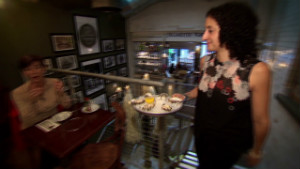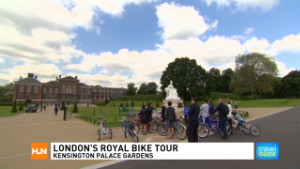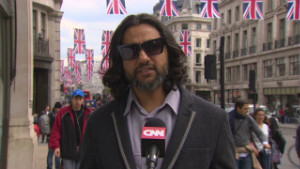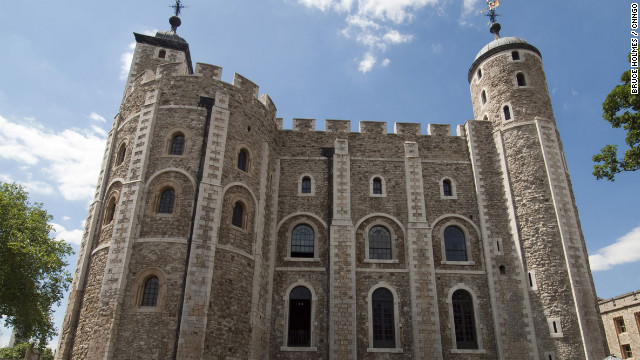London's World Heritage Sites: 5 ways to escape the Games
July 26, 2012 -- Updated 0614 GMT (1414 HKT)
STORY HIGHLIGHTS
- If you tire of athletics, take a stroll through London's World Heritage sites
- Sites are perfect for tourists interested in royal history, nature, art, and science
- Buy tickets ahead of time for those with paid admission and plan for long lines
The fittest, leanest,
most Lycra-becoming humans alive today are to compete in the London 2012
Olympics and millions of mortals will watch with awe, excitement and
possibly a little envy. And Usain Bolt will earn more fame, fortune and
adulation in 10 seconds than most of us earn in a lifetime.
But there is culture of a different kind to be found too -- in the form of London's World Heritage Sites.
 A visitor's guide to London
A visitor's guide to London
 London's royal bike tour
London's royal bike tour
 Open Mic: London message to U.S.
Open Mic: London message to U.S.
These UNESCO-endorsed
sites have been around for decades, even centuries, and this July and
August could just be the perfect time to see them.
1. Tower of London
Ever wondered what it
would have been like to be strapped to the rack? See the dreaded machine
in the Bloody Tower at the Tower of London and learn about various
forms of torture used during the reigns of Henry VIII, Elizabeth I and
Mary I.
From St. Thomas' Tower,
where the monarch's barge was moored, walk along the south wall for a
view across the river to Tower Bridge.
Down in the courtyard the
resident ravens are kept in their enclosure. Legend has it that the
Tower will fall if the six ravens ever leave, so seven are kept,
providing one spare.
Some exhibits are
interactive -- visiting school children enjoy putting on the helmets in
the White Tower's armory. But these are attached to chains, so there's
no taking them home.
This is where it all
began, with William the Conqueror constructing a fortress here in the
11th century. The massive White Tower provided a haven in case the newly
conquered English rebelled.
Fortifications were added by successive English monarchs, who also used the Tower as a prison.
The Crown Jewels are on
display in the Jewel House, from diamonds to maces and crowns, the
heaviest of which is the 2.23-kilo, solid gold St. Edward's crown made
in 1661.
To brush up for that trivia quiz, the biggest, brightest and best are listed online.
2. Westminster Abbey
We've seen it on
television for Princess Diana's funeral and the wedding of William and
Kate, but no visitor to London should miss stepping inside Westminster
Abbey.
History tours are led by a verger, one of the laymen assisting in the church.
King Edward, later St.
Edward the Confessor, built a stone church here. Consecrated in 1065, it
saw William the Conqueror crowned there a year later, as England's
monarchs have been ever since.
In the 13th century Henry III
rebuilt the church in the Gothic style we see today. His burial here in
1272 established a royal tradition that lasted 500 years.
Many famous people have
been laid to rest in the Abbey, from Charles Darwin and Sir Isaac Newton
to those in Poets' Corner like Geoffrey Chaucer, Alfred Lord Tennyson,
Charles Dickens and Robert Burns.
In the Nave we pay our respects at the grave of the Unknown Warrior.
Other highlights
include the 709-year-old wooden Coronation Chair and the marble
pavement in front of the High Altar, decorated in 1268 by the Cosmati
method of inlaying small pieces of colored marble into a plain
background.
At the shrine of St. Edward the Confessor, steps at the base have been worn away by the knees of visitors.
Visitors can inspect the adjacent medieval St. Margaret's Church at their leisure.
3. Royal Botanic Gardens at Kew
While most people know Sir Joseph Banks
as the botanist who accompanied Captain James Cook on his voyage to the
South Seas, which also took in the continent of Australia, many might
not be aware of Banks' accomplishments on returning to England.
After he took over as
head of the botanic garden at Kew in 1773 its international reputation
grew, with researchers bringing botanic specimens from as far afield as
India, Africa, China and Australia.
That tradition continues today with a scientific program
aimed at saving threatened species. Plants from all over the world are
preserved in climate-controlled atmospheres and this history of
botanical achievement is a prime reason for the World Heritage listing.
The other reason is that
its landscaped gardens and associated architecture represent
developments that were to have an influence throughout the world.
Two massive iron-framed
glasshouses, the Palm House and Temperate House, dating from the 19th
century, became impressive models for conservatories around the world.
Also included among 44 listed buildings is Kew Palace, formerly home to King George III.
For something modern
there's the Rhizotron and Xstrata Treetop Walkway, opened in 2008.
Designed by Marks Barfield Architects, renowned for the London Eye, this
18-meter-high, 200-meter-long walkway takes visitors around the crowns
of lime, sweet chestnut and oak trees.
4. Palace of Westminster
After passing through
airport-style security, the tour of the Palace of Westminster, which
houses the British Parliament, begins in the 11th-century Westminster
Hall. This hall has the largest clear-span medieval roof in England.
There's the Queen's
Robing Room, where the monarch dons her official robes and crown for the
annual Opening of Parliament. Paintings of King Arthur and his knights
adorn the walls.
Bill Gates, Michael
Jackson and Michelle Obama have stood in the Royal Gallery, where in
1984 French president François Mitterrand delivered a speech between
frescoes of British victories at Trafalgar and Waterloo.
In the House of Lords Chamber there's a spot where civil servants sit, writing answers for questions put to Ministers.
Standing at the dispatch
box in the House of Commons chamber visitors get to play the role of
prime minister. On view in St. Stephen's Hall is the statue to which
Emily Pankhurst chained herself during the suffragettes' protest
movement.
Back in Westminster Hall, the guide indicates the dreaded King's Chair, where Charles I, William Wallace (Braveheart) and Guy Fawkes were tried and condemned.
Leaving the palace,
statues of republican warrior Oliver Cromwell and crusader-king Richard
the Lionhearted bring to mind the tortuous history Britain has endured
to gain a democratic parliament that sits in a once-royal palace.
5. Maritime Greenwich
Greenwich Mean Time is
set at the Royal Observatory in this London borough, mandating time on
clocks around the globe. Also at the Royal Observatory is the Prime
Meridian, establishing the world's settings for longitude.
Located by the Thames in southeast London, Maritime Greenwich boasts more than the observatory, however.
"The ensemble of
buildings at Greenwich ... symbolize English artistic and scientific
endeavour in the 17th and 18th centuries," the UNESCO listing reads.
Architectural highlights
include the Queen's House, the first true Renaissance building in
Britain, and Sir Christopher Wren's beautiful baroque buildings,
especially the twin domes of the Painted Hall and Chapel of Saints Peter
and Paul, part of the Old Royal Naval College.
The National Maritime
Museum features a wave tank for experiments, toy boats illustrating
maritime history and until September 30, a small exhibition focusing on
personal stories of survivors of the Titanic.
Something special is the Cutty Sark.
Built in 1869 and "re-launched" last April following extensive repairs
in the wake of a fire in 2007, she is said to be the "last surviving tea
clipper and the fastest and greatest of her time."
Note: During the 2012 Olympic Games Greenwich Park will host modern pentathlon and equestrian events.
Information: Visit Greenwich

 William the Conqueror ordered the construction of the massive White Tower in the 11th century.
William the Conqueror ordered the construction of the massive White Tower in the 11th century.
ไม่มีความคิดเห็น:
แสดงความคิดเห็น